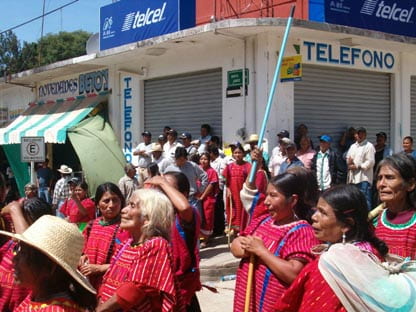
Indigenous Activism in Mexico and Transnationally
Media For Indigenous Activism in Mexico and Transnationally
English Translation
Spanish Translation
- La historia de los derechos humanos, de las mujeres y de los indígenas en el Estado de Oaxaca
- El movimiento social oaxaqueño del 2006: Una cronología audiovisual de junio a noviembre del 2006
- Violaciónes de Derechos Humanos en Oaxaca
- Medios, Género, y Radio Indígena y Comunitaria
- Impactos Políticos e Económicas del Conflicto
- Activismo Indígena
- Jóvenes Organizando y Arte Para el Pueblo

This section focuses on organized indigenous participation and responses to the Oaxaca social movement in Juxtlahuaca, Oaxaca, and in Los Angeles. In Juxtlahuaca, Triqui and Mixtec men and women were integral agents of the APPO’s occupation of city hall and the four-month effort to provide some city services while fending off paramilitary harassment and repression. Testimonials of key participants, photographs and documentary video illustrate these experiences.
The most significant outcome of indigenous participation in Juxtlahuaca was the creation of a regional APPO organization which gave way to twenty Triqui communities declaring San Juan Copala an autonomous indigenous municipality in January 2007. They did this through announcing a new Triqui organization known as Movimiento Unificación Lucha Triqui Independiente, or MULTI, which splintered from another organization. MULTI’s declaration of political and legal independence produced a severe and violent retaliation from the organization they split from. The APPO in western Oaxaca functioned as a pan-indigenous organizing space that built on the work of organizations such as the Frente Indígena de Organizaciones Binacionales (Indigenous Front of Binacional Organizations, FIOB), MULTI, and other local organizations.
Finally, the chapter discusses how transnational indigenous communities succeeded in participating in the social movement through an APPO chapter organized in Los Angeles. Broadcasting testimonials and speeches by cell phone, the transnational counterparts further amplified the audience for the Oaxaca rebellion, increasing the amount of people who exercised their right to speak and listen within it. This chapter features key participants in the Juxtlahuaca and Los Angeles APPO, including activists from the Indigenous Front of Binational Organizations (FIOB).

